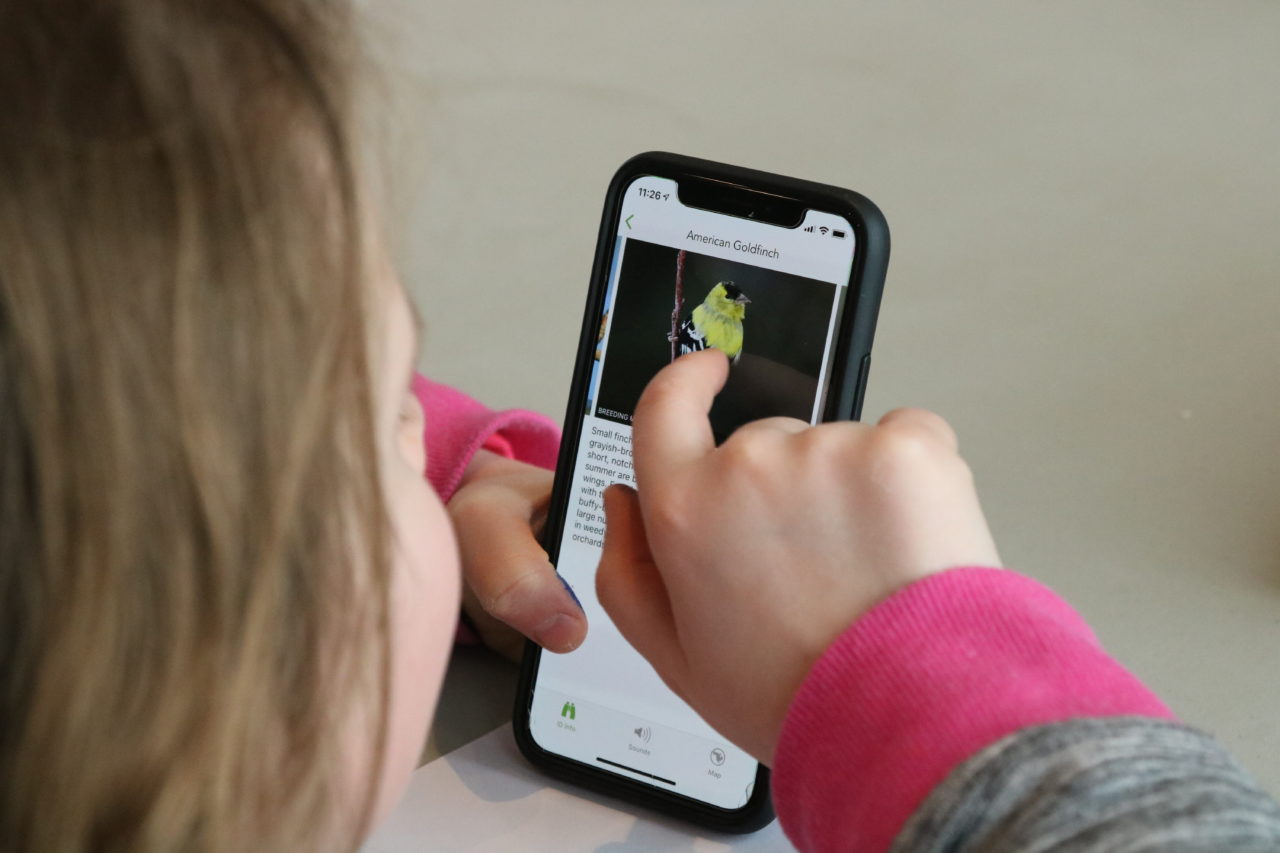Apps for Observing the Natural World

Sometimes mobile technology hinders students’ observations and participation because they are scrolling through social media, texting, watching random videos, or playing games. However, technology is also a useful tool that can be incorporated into many activities to engage students and facilitate learning. We’ve compiled a list of free and useful apps to engage students and help them learn more about the natural world.
Birds
Merlin Bird ID (beginner)
Merlin Bird ID helps birders of any age or skill level identify birds using five questions: Where? When? What size? What colors? What was the bird doing? It then searches through its database of all previous bird sightings in your area for that day and generates a list of possible birds. The app does not require an account but it does use your location to create a list of birds you are most likely to see. You can also use the app to explore and learn more about birds and find the birds most likely to be in your area on any given day. To start identifying birds in your area, simply download the app and appropriate bird packet. Or to teach Bird ID while also learning how to use Merlin Bird ID, check out our Cooped Up Kids Activity 5: Bird ID. The app is free for iOS and Android users.
eBird (advanced)
eBird is an app that turns your bird sightings into science and conservation research. Birders start a checklist where they add all the birds they see, hear, and identify during an outing. The app sends your data to a database where it is combined with the data from other birders across the globe. The data is used for student projects, conservation decisions, peer-reviewed papers, and helps inform bird research on a worldwide scale. And there’s lots of free resources to get you started: a free lesson for each grade band K-2, 3-5, 6-8, and 9-12, plus a on-line class to help you to learn more about eBird, eBird Essentials that includes the eBird for Educators Guide. Get the app for both iOS and Android users. You do need an account for this app so look at the eBird for Educators Guide to learn best practices for your classroom.
Plants & Animals
seek (beginner)
Seek is a great app for younger students and beginner scientists to observe and learn about plants and an imals! Simply use your camera to scan any living material and identify it. From the photo, the app will tell you the species and provide additional information to learn more about the plant or animal. Young people love the app’s gaming aspect – there are opportunities to earn badges and level up with each observation. Also, the app has strong safety features. No registration is required, no user data is collected, and your precise location is not stored or sent to a database.
imals! Simply use your camera to scan any living material and identify it. From the photo, the app will tell you the species and provide additional information to learn more about the plant or animal. Young people love the app’s gaming aspect – there are opportunities to earn badges and level up with each observation. Also, the app has strong safety features. No registration is required, no user data is collected, and your precise location is not stored or sent to a database.
To start, simply download the app, give it access to your camera, and get outside to explore! Free for iOS and Android users
iNaturalist (advanced)
iNaturalist is a more advanced version of the seek app, where photos of plants and animals are uploaded, and if known, identified by the user. However, if a species is unknown, the community of naturalists will work to identify it from your photo. If data is entered about the location and date of a finding, it can even be used for research purposes. Additionally, you can start a “Project” in the app that allows people in your group to create a collection of observations for your project! The app requires an account and email address. Free for iOS and Android users.
Weather
GLOBE Observer
This educational app is designed for scientific data collection about clouds, mosquito habitat, land cover, and trees. All of them use observations to help NASA scientists better understand the satellite data they collect from space. The cloud observation protocol guides you through the amount of cloud cover, type of clouds, visual opacity, asks for surface conditions, and you can add an optional photo of the sky. The other protocols have similar guides. The app requires you to register. Free for all users. Learn more & download the app.
Local Weather
The Weather Channel, Weather Underground, Weather Bug, AccuWeather, and NOAA Weather Radar Live are some of the many weather apps that provide a wealth of meteorological data, including visibility, wind, and temperature on an hourly basis for anywhere in the world. And most include extended forecasts, radar data, severe weather alerts, and videos. Search your app store and find the one that you like best!
Soil
SoilWeb
SoilWeb is an advanced app that can tell you all about the soil where you are standing. Using your location data, this program identifies and describes the kind of soil at your location, its textural contents, the slope of the soil, taxonomic class, and each soil horizon. This app also tells you the soils in the same family, the soil distribution and extent, and typical vegetation and uses. No registration is required to use. The data comes from the USDA’s SURRGO dataset. Free for iOS and Android users.
So rather than fighting technology, embrace technology as one tool for making observations and learning about the natural world. And using a mix of technology and less tech-focused methods can help all students learn.

